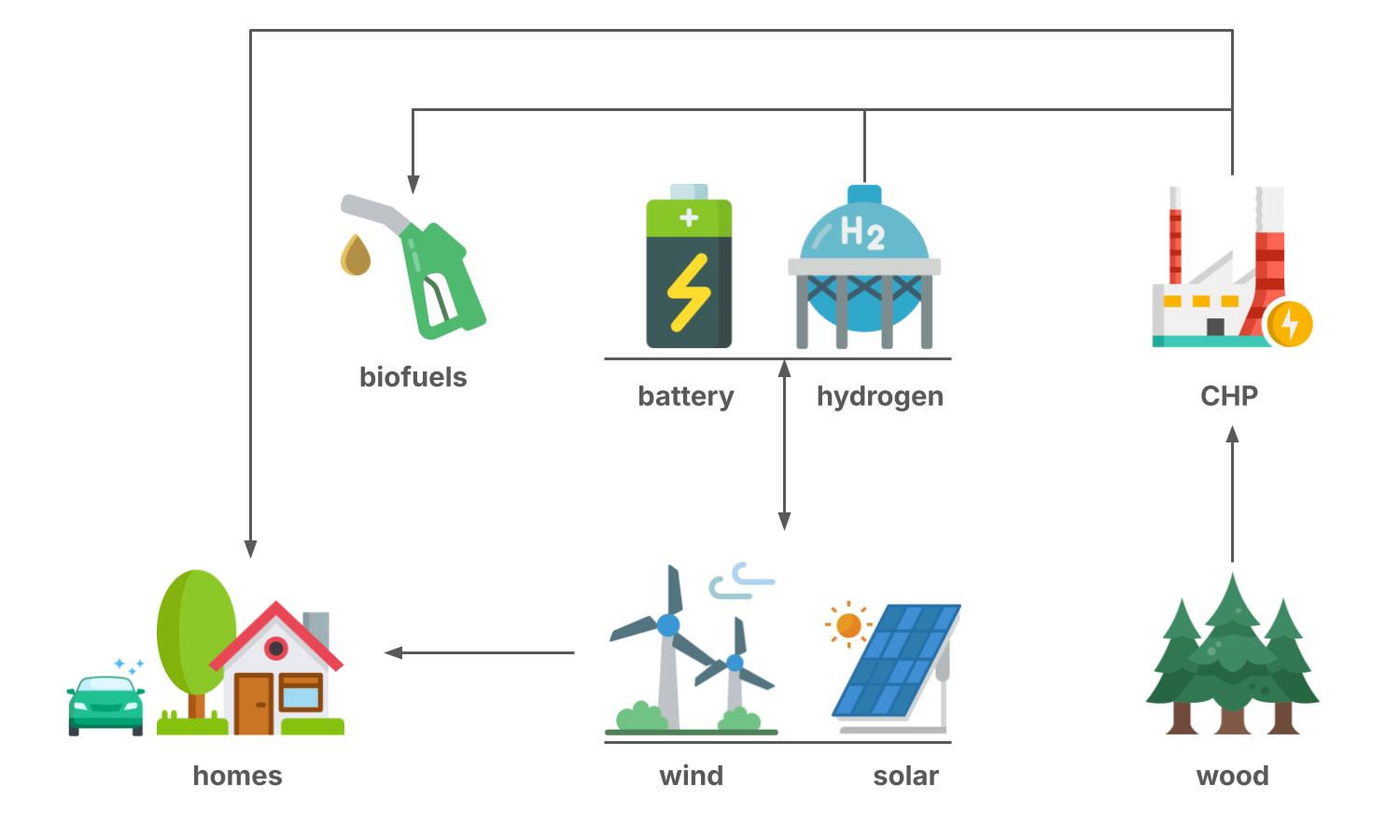Faced with economic collapse and depopulation, a small Bavarian town built a decentralized, renewables energy system—turning sun, wind, wood, and hydrogen into local power, jobs, and future-proof infrastructure.
A German small town at the edge of collapse
Wunsiedel, a town of just over 9,000 located in Bavaria’s Fichtelgebirge, once earned the nickname „Bavarian Sibitia“ for its bitter winters and economic isolation. By the early 2000s, it was facing collapse. Textile and porcelain factories had shut down. Youth fled. One in ten residents left. Municipal debt spiraled. The city-owned utility bought power from distant corporations while the town slipped further behind.
In 2001, mayor Karl-Willi Beck drew a line. He gave Marco Krasser, the new Managing Director of the municipal utilities, 14 days to develop a strategy to make Wunsiedel energy-autonomous by 2025. That ultimatum launched a transformation that has now drawn over €250 million in investment and turned the town into a living blueprint for a circular energy economy.
Rethinking Local Energy
Wunsiedel’s core goal was simple: provide affordable, efficient and locally controlled supply of energy. The town rejected dependence on global energy markets, fossil fuels, and the political volatility that drives price spikes and shortages.
Instead, it built a system that produces, stores, and redistributes energy across four tightly integrated sectors: power, heat, mobility, and industry. The result is a showcase in what happens when municipalities embrace system-level thinking, entrepreneurial governance, and innovative cross-sector collaboration.
That strategy was formalized in the „WUNsiedler Weg Energie“—a structured roadmap co-developed by the city and its municipal utility, Stadtwerke Wunsiedel. This approach aligned political will, engineering expertise, and regional opportunity into a single, coherent transformation agenda.
The Circular Energy System

1. Local generation
Wunsiedel invested early in photovoltaic (PV) systems, starting with a 2004 citizen-owned solar plant that paid 7% annual returns for two decades. Today, the local grid hosts several hundred PV installations, among them a 7,000 m² solar field on a former porcelain factory and an agro-PV system where sheep graze beneath panels—combining energy generation with land stewardship.
Wind power followed a similarly path. The region now operates 34 turbines, developed in part through ZukunftsEnergie Fichtelgebirge GmbH—an inter-municipal venture that pools expertise shares investment risks across neighbouring towns.
Biomass completes the trio: a combined heat and power (CHP) plant uses forestry residue to produce electricity and heat. The waste heat is repurposed to dry sawdust into pellets, which are distributed across the region as a renewable fuel. Pellet production not only adds economic value but enables heat and power to be stored—bridging the gap between generation and demand.
2. Smart storage
Alongside thermal storage in the form of pellets, Wunsiedel has invested in high-capacity electrical storage systems.
Electricity is stored in one of Germany’s largest battery storage systems, inaugurated in 2024. Spanning 12,000 m², the facility balances grid fluctuations in real time. During lulls in wind or solar generation, it can instantly discharge power—enough to supply the entire Wunsiedel district of 80,000 people for up to 12 hours.
Excess renewable electricity is also converted into hydrogen via an 8.75 MW electrolyzer—one of the largest of its kind—producing up to 1,350 tonnes of green hydrogen annually. This hydrogen acts as a seasonal storage medium and fuels both industrial processes and zero-emission vehicles.
3. Sector coupling
Energy isn’t just generated—it flows. Waste heat from the biomass CHP system dries wood shavings into pellets, which are stored as fuel and used in colder months. This multi-use chain turns waste into value and bridges time gaps between supply and demand.
Rest products from the hydrogen plant, like excess oxygen and biomass residue, are being integrated into synthetic fuels through the federally funded „Wastewood to Fuel“ initiative—closing another loop in the circular energy system. Siemens supports the system with predictive analytics and automation that connect power, heat, and mobility in real time.
4. Community and ownership
Wunsiedel avoided the privatization trend of the 1990s by doubling down on public-private cooperation. Stadtwerke Wunsiedel leads the strategy, with equity stakes from Baywa, Siemens, MW Storage, and regional wood companies. Citizens also co-own assets via energy co-ops and share in the profits.
The town has also piloted „energy sharing“ models: surplus electricity is pooled and redistributed under legally compliant structures using Power Purchase Agreements (PPAs). The co-op is now developing its own battery storage to trade power on the spot market and increase revenue stability.
This collaborative, entrepreneurial approach has allowed Wunsiedel to punch well above its weight—transforming systemic complexity into local opportunity. A real-time energy visualization portal further strengthens public trust and engagement.
Measurable Impact
The results are clear:
- Wunsiedel achieved its 2020 climate targets four years early.
- Today, it produces 20% more renewable electricity than it consumes.
- Business tax revenue has more than quadrupled.
- The municipal utility posted a €1.5 million profit in 2023.
- Population decline has reversed; housing demand is up.
- Inquiries from data centers and fuel-cell manufacturers are rising.
Beyond energy, the strategy has delivered cross-sector benefits: district heating rollouts double as broadband infrastructure projects, and pellet production generates stable export revenues.
The Road Ahead
Next steps include replacing aging wind turbines with higher-output models, expanding solar and battery storage, and building a municipal heating network to fully phase out natural gas.
Wunsiedel’s transformation has not been without friction: legal hurdles around energy sharing, capital intensity, and storage economics remain. But the town’s innovation lies in its commitment to systems thinking. It doesn’t rely on any single technology, but on how technologies, actors, and capital interact.
A Model for Europe
As energy systems worldwide strain under the demands of climate goals and economic uncertainty, Wunsiedel offers a new kind of answer. Not every town has wood waste or hilltop wind, but every region has underused assets. What matters is orchestration.
That orchestration is already scaling: Wunsiedel maintains a knowledge-sharing partnership with the Polish town of Łapy—supporting local energy planning, retrofitting, and civic engagement in a region where energy transformation is still politically fragile.
Wunsiedel’s lesson is clear: by combining local leadership, circular design, and entrepreneurial collaboration across sectors, even small towns can become system innovators—and lead the global energy transition.
Related Posts
März 25, 2022
Building the Future in a Warming World
When you are alone for days or weeks at a time, you eventually become drawn to…



